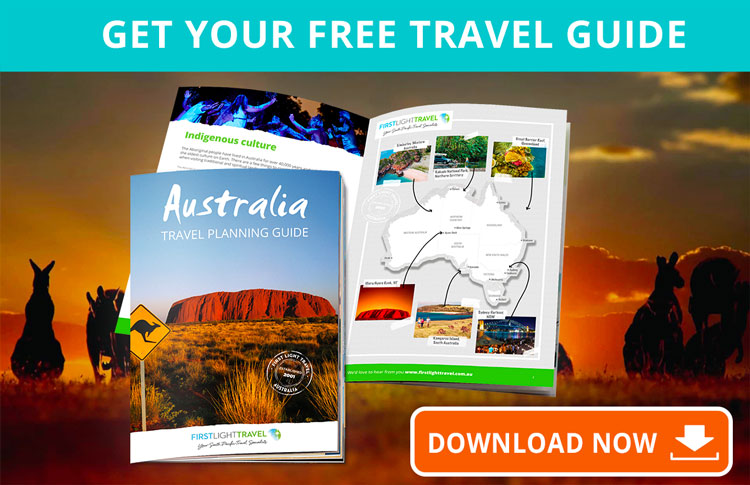When is the Best Time to Visit Australia?
When it is Summer or Winter in the northern hemisphere, the opposite season prevails in Australia, a principle that becomes harder to apply to the transitional seasons of Autumn and Spring. To confuse things further for those planning an Australia vacation downunder, the four seasons only really exist in the southern half of the country outside of the tropics.
Here, you’ll find reliably warm summers at the coast with regular, but brief heat waves in excess of 40°C (104°F). Head inland, and the temperatures rise further. Winters, on the other hand, can be miserable, particularly in Victoria, where the short days add to the gloom. Tasmania is cooler year-round: while weather in the highlands is unpredictable at all times, summer is a reliable time to explore the island’s outdoor attractions.
As a result, the best time to visit Australia depends on where exactly you plan to go.
Australia Seasons
In Australia, the seasons are defined by grouping the calendar months in the following way:
- Spring - the three transition months September, October, and November.
- Summer - the three hottest months December, January, and February.
- Autumn - the transition months March, April, and May.
- Winter - the three coldest months June, July, and August.
More info: When is the BEST season to travel to Australia?
High Season for Tourists
April to September is High Season for Tourists. Depending on what you are looking for, visiting Australia during the high season can be good or bad. Everything is open and running and the weather is mild and dry in most of the country, with warm days. However, the high season can mean crowding and chaos at popular sites, and you'll need to plan and book far in advance to avoid disappointment.
Low Season for Tourists
October to March is the low season for Tourists. Low season in Australia is less crowded, but it's can be an uncomfortable time of year to visit. Much of the country, including the Red Center and much of Western Australia, is simply too hot and humid to travel comfortably. Many hotels and attractions also close during this time, and floods are also a serious problem in much of the country. However, if you visit at this time, many hotels offer discounts.
Jellyfish Season
If you are coming to Australia for a beach holiday and you planning on swimming, don't visit during jellyfish season, when the waters are unsafe. During this time, which takes place at different periods throughout the country, box jellyfish swarm the oceans and their excruciating sting are usually very painful and in some cases deadly, Jellyfish season typically lasts from October to April in northern Australia and November to March in the north of Western Australia and Queensland.
Crazy January
Though January weather in much of Australia is warm, it's not an ideal time for travel. Most Aussies go on holiday and school kids are on holiday. Much of Australia is overwhelmingly hot in January - it's also high season for mosquitoes and flies.
Australian School Terms & Public Holidays
During Australian Public & School Holidays seat availability on flights, tours and accommodation may be limited, unavailable or priced very high due to high demand. You may like to consider avoiding travel during Australia’s Public & School Holidays.
Australian School Terms & Holidays
Australian Public Holidays
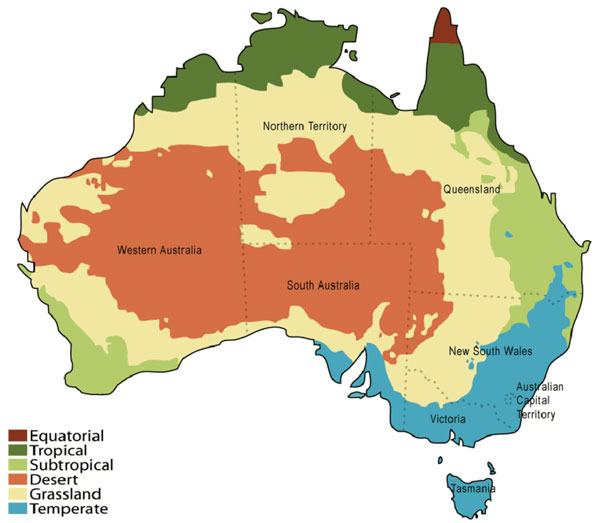
When is the Best Time to Visit Australia? - by Region
The Best Time to Visit the Northern Territory
The Northern Territory plays host to a handful of the country’s largest deserts, including the Great Sandy Desert, Tanami Desert, and the Simpson Desert, each contributing to an expansive landscape that is uniquely Australian. With terrain ranging from powerful rivers and expansive wetlands to barren deserts and sandstone escarpments, much of the Northern Territory has been shaped by a monsoonal climate that cultivates extremities, ensuring one of the most dynamic and exciting environments on earth.
Try these Northern Territory Self Drive Itineraries
1) The Red Centre
Australia’s interior is an arid semi-desert with very little rain, high summer temperatures and occasionally freezing winter nights. The best time to visit Australia's Red Centre, Uluru and Kata Tjuta is between May and September when the maximum temperature during the day is usually between 20°C (68°F) and 30°C (86°F). The weather is cooler, making it easier and safer and much more pleasant to walk and there is very little rain. Overnight temperatures can be very cold during winter, so be sure to bring some warm clothing with you.
August and September are usually the best months to see the park’s wildflowers in bloom. October to March can get extremely hot, with daytime temperatures regularly exceeding 35°C (95°F). However, the hot weather also brings storms and rain, which fill the waterholes and start Uluru’s waterfalls flowing – a truly spectacular sight!
If you visit the park during the summer, make sure you drink plenty of water and do not walk after 11.00 am. Summer also brings large numbers of flies to the desert, so you might want to consider wearing a protective head net (these can be purchased when you arrive).
Weather in Uluru could be considered extreme. Summer temperatures can get very hot with temperatures soaring to 40°C (104°F) and 45°C (113°F) in the desert. On the contrary, during the winter, temperatures can drop to below 0°C (32°F) Here’s a rundown of what temperatures you could expect when you visit, depending on the season and the months you choose (all temperatures are in Celsius and are rounded off).
Spring – High from 26°C-34°C (79°F-93°F) and low from 17°C-9°C (62°F-48°F)
Summer – High from 35°C-38°C (95°F-100°F) and low from 17°C-21°C (62°F-69°F)
Autumn – High from 23°C-28°C (73°F-82°F) and low from 17°C-8°C (62°F-46°F)
Winter – High from 22°C-20°C (71°F-68°F) and low from 5°C-3°C (41°F-37°F)
2) Darwin, Kakadu, Arnhem Land, Katherine & Surrounds
Known for its tropical weather, Salt Water Crocodiles, rich Indigenous culture, abundant fishing spots, National Parks and laid-back Australian lifestyle; the Top End is blessed with more than its fair share of world-class destinations and attractions. Monsoonal wet and dry seasons provide the region with one of Mother Nature’s most punishing environmental contrasts, shifting from dry heat and scorched earth to astonishing downpours and flooded plains on a half-yearly cycle.
Wet Season (November – April)
During the wet season, the Top End is subject to unprecedented volumes of rainfall. Characterised by intense and often visually dramatic weather events, the average temperatures range from 25°C (77°F) to 33°C (91°F) and are amplified by a sharp rise in humidity (in excess of 80%).
Visiting the Top End during the wet season provides travellers with some interesting dilemmas. The increased rainfall results in spectacular waterfalls pumping with life and lush green landscapes that engulf much of the region, including Kakadu and Litchfield National Park. Locations such as Jim Jim Falls and Twin Falls will also reach their visual best during these months. - Katherine Gorge as a visually impressive destination during the wetter months. The whole area's waterfalls are amazing when it’s so wet, the wildlife really comes out but the downside is roads can often be closed and certain areas won’t be accessible.
Dry Season (May – October)
During the dry season, the Top End boasts warm sunny days and crisp winter nights. Temperatures typically range from 21°C (70°F) to 32°C (90°F), with a drying heat throughout the day complemented by substantially lower levels of humidity (around 60 – 65%) providing arguably the most comfortable time of year to visit.
With the lowest temperatures falling between May and July, the Top End will never be more accessible than it is during these months. Regions that were previously off-limits from flooding or dangerous conditions have now reopened and visitors are free to explore every nook and cranny to their heart’s content.
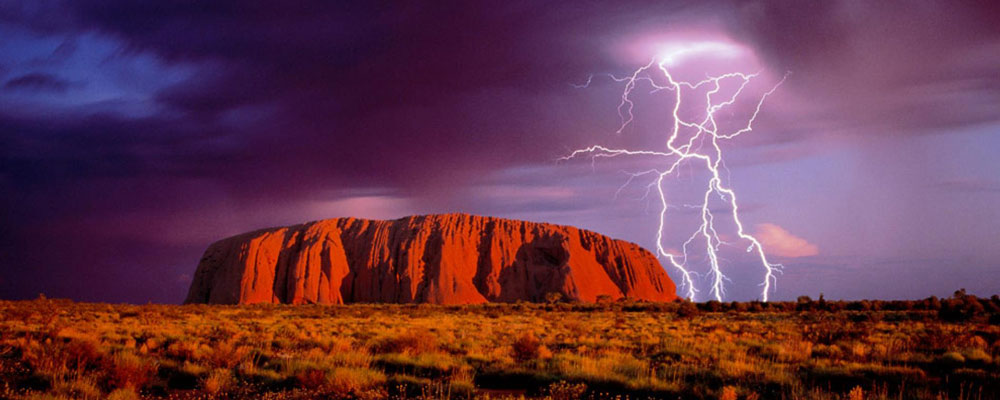
The Best time to Visit Western Australia
Visit the South of Western Australia (below the Tropic of Capricorn) between November to March (summer) when it doesn’t rain as much and the temperatures are high. Above the Tropic of Capricorn visit Between May and October (during the dry season) when the temperatures are milder.
Itinerary Ideas for a Western Australia vacation
1) The Coral Coast
North of Perth you'll find the Coral Coast: more than 1,100 kilometres (680 miles) of white beaches, outback desert, laid-back coastal towns and the world's largest fringing coral reef: World Heritage-listed Ningaloo. The best time to visit the Coral Coast is generally between March to October due to warmer weather as well as the concentration of seasonal activities.
March-May: Coral Spawning
March-July: Whale Sharks
June-November: Manta Rays
June-November: Humpback Whales
November-March: Turtle nesting and hatching
July and October: Wildflowers
2) Margaret River
The Margaret River region is just under 3 hours drive South from Perth, which, by Australian standards, is a medium level drive. With 4 four distinct seasons, the mild Mediterranean climate not only makes Margaret River a premium wine growing region, but also a year-round choice for holidaymakers.
In summer, there is little rainfall and the average maximum temperature is just under 30°C (86°F). Hot days are usually cooled off by afternoon sea breezes. Summer evenings are balmy to mild with temperatures around 15°C (60°F). Also in summer, the stunning beaches seduce swimmers and kite surfers.
Most of the rainfall occurs in the winter but winter still has many glorious sunny days. Winter enjoys mild temperatures that average 16°C (61°F) to 18°C (64°F) with some days in the early ’20°C (70°F). Winter evenings are mild and average above 8°C (46°F) but are still cool enough to enjoy a log fire.
Spring and autumn are lovely and warm with plenty of sunny days. Autumn sees a flurry of arts and wine-inspired events. In spring, the wildflowers put on their own dazzling show.
3) The Kimberly
Between April to October is the best time to be in the Kimberly, go too early and you will be in the wet season and may experience road closures. Many of the region's attractions are also closed during the wet season. Go too late and you risk the closure of attractions due to bush fire.
June and July are warm but not hot, with cool to cold nights, during these times it can get down to single-digit temperatures in the Bungle Bungles (where you cannot have a fire), many people consider these months to be the best.
August is probably the best month, school holidays are over, the days are nice and warm which makes for great swimming, the nights are still cool which makes great camping and the water quality is still really good.
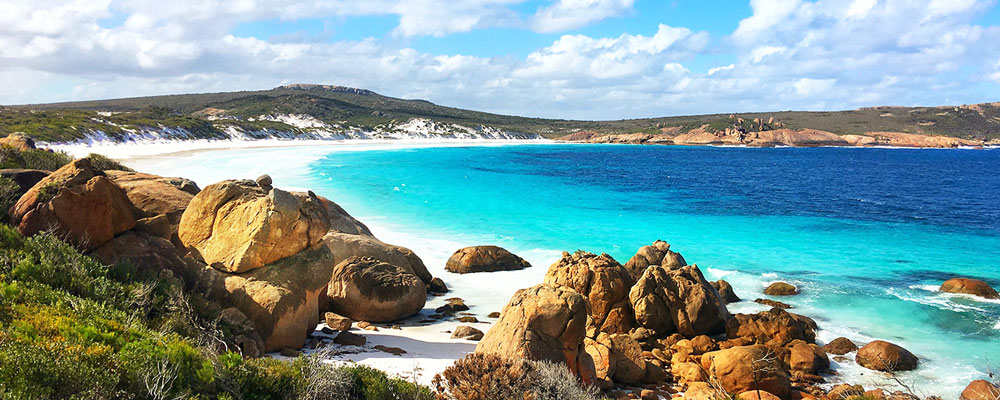
The Best Time to Visit Queensland
1) Tropical North Queensland
Tropical North Queensland, or the regions of Cairns, Port Douglas, and Palm Cove, are hot and humid year-round and temperatures averaging around 31°C (88°F). The weather falls into two seasons.
The best time to visit is during the hot and cloudless Dry (from April to November), with moderate coastal humidity maintaining a pleasant temperature day and night and cooler nights inland. Rainfall is low and you can expect gorgeous sunny days, making it the most popular time to visit the region. The ocean is free of marine stingers during this time, so you can swim almost anywhere without nets or suits for protection.
Cairns’ rainy season is from November to April; this is when you will get near-daily rainfall but far fewer tourists. The “Build-Up” to the rainy season in November or December before the heavy rains can be very uncomfortable, with stifling, near-total humidity. During the wet season, the colours of the rainforest are at their brightest and the waterfalls are full and spectacular. The water around the Great Barrier Reef is calm at this time of year, so it’s perfect for snorkeling and diving.
2) The Whitsundays Islands
In the Whitsundays the wet season about matches that of Cairns, running November to April, however, the added concern are stingers. Stinger season runs approximately between October and March every year, and during this time a stinger suit must be worn when swimming in the Whitsundays, including on day trips to the Great Barrier Reef and Whitehaven Beach or just off the beach at Daydream Island.
The temperature remains even throughout the year, with July and August the coolest months at 22°C (71°F) and the warmer, summer months reaching no higher than 31°C (88°F).
3) The Sunshine Coast
Stretching from the coastal city of Caloundra, near Brisbane, to the Great Sandy National Park in the north, the Sunshine Coast is home to pretty villages surrounded by beach, Noosa, and Maroochydore. Noosa receives less rain than its northerly sisters and is, therefore, more suited to year-round travel. As stingers don’t come this far south, there is no concern when getting in the water. Noosa’s rainy season also parallels that of Cairns and the Whitsundays, as most of Queensland.
4) The Gold Coast
While it may be tempting to visit the Gold Coast during the summer months of December to February, these periods can become uncomfortably warm and provide inconsistent tropical weather. Also, due to the destination’s popularity internationally, these periods become incredibly crowded with families travelling during the school holidays.
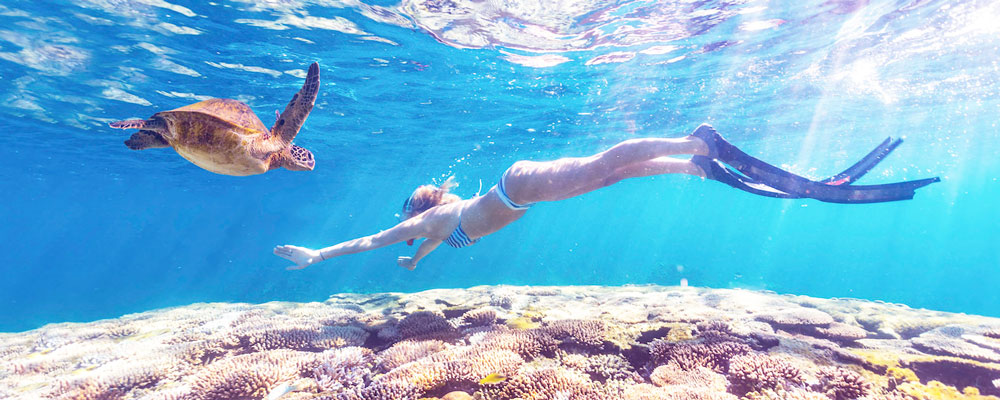
The Best Time to Visit Tasmania
If you want to know about the best time to visit Tasmania, you need to keep asking every five minutes. Because that is how often the weather can change. It’s so different from the rest of Australia, it is almost astounding. It has maritime and mountain climates, with rainforest thrown into the mix.
For many people, the best time to visit Tasmania is the driest, warmest months, December through February. Don't let the tourist troops and pricier rooms let you down, as summer in Tassie brings various festivals and is perfect for hiking and scuba diving.
March and April, Tasmania’s autumn, is also a good time of year to visit. This is usually the driest time of year, and the days are still warm and long, but the nights are beginning to cool down and everywhere is much quieter, this is also the time of year for yachting, wines, and fresh Pacific oysters. However, this is also mating time for Tasmanian devils so the chances of seeing them in the wild are less than at other times of the year.

The Best Time to Visit New South Wales (Sydney)
New South Wales enjoys a subtropical climate, bringing hot summers and cool winters, with plenty of year-round sunshine across the state and enough rain to keep the land green and fertile. In general, the coast is the warmest place to be, while the inland mountains can experience snow and frost in the depths of winter. However, moving westwards, you get into some really dry areas, and even venture into the desert. so be prepared for all eventualities.
Spring
September - November
As the days heat up, New South Wales comes alive with greenery and life. Days are warm and sunny, but not too hot, so now’s the time to explore the Blue Mountains, chill out on the beaches and tour the Hunter Valley. Sydney is gorgeous in the springtime too – the flowers are blooming, the birds are singing and the city is enveloped in a canopy of purple jacaranda trees.
Sydney
With beach-worthy summers, breezy autumns, fresh winters, and colour-filled springs, it’s no surprise Sydney is consistently ranked among the world’s most liveable cities. Whether you prefer the heat of the summer for optimal beach weather or cooler, crisp winter mornings for a busy day of sightseeing, Sydney will have the perfect climate for you to plan your visit.
When is the best time to come to Sydney - Summer in Sydney has a habit of throwing together strings of scorching hot days while winter brings with it some icy-cold mornings and evenings.
September and October
September in Sydney marks the beginning of Spring and brings along with it all the hallmarks that make this season so pleasant, the days range from cool to warm, humidity is low, and there's annually a high volume of sunny days in the month.
September is statistically the month of the year in Sydney with the lowest amount of rainfall - a reason why the 2000 Sydney Olympic Games were held in September - and this extends largely through to the majority of October as well.
Temperatures during this crossover period average a comfortable maximum of 21.0°C (69.8°F) and a slightly chilly yet bearable 12.3°C (54.1°F) minimum. As a result, it's basically shorts and t-shirt weather during the day time, with only some light additional layers needed in the evenings.
The end of September signals the beginning of the Australian school holiday period. From the end of September to the beginning of October, you may see a rise in prices for accommodation, flights, and various attractions, however, if you're planning to visit with the kids during the holidays this would be one of the best times to do so.
Explore Sydney & surrounds: New South Wales Self Drive Itineraries
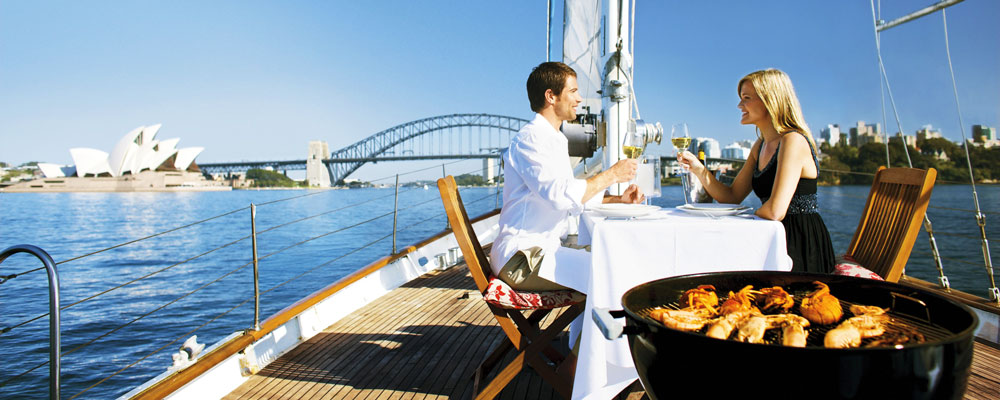
The Best Time to Visit Victoria (Melbourne)
Despite being approximately the same size as the United Kingdom, Victoria has a surprisingly varied climate, ranging from semi-arid in the north to temperate along the coast, producing hot to mild summers and cool winters, with a good amount of rain to keep the land looking green and lush.
Melbourne
It’s common for Melbourne to experience all four seasons in one day – one minute it can be sunny before it quickly turns to rain. It’s often warmer and dryer the further north you travel. Summer is hot with warm nights. Winters, on the other hand, are rather cool and rainy, but they continue to offer many sunny days.
With its variable climate, Melbourne hots up December to February (summer), cools down March to May (autumn), chills out June to August (winter), and warms up again September to November (spring). Melbourne's top temperatures are usually in January and February. Those months are often dry, with hot spells and cooling afternoon breezes off Port Phillip Bay. June and July are the coldest months, and October is the wettest.
When is the best time to go to Melbourne: The Best seasons are generally considered to be autumn (March to May) and spring (September to November). These are the best times to enjoy good weather and avoid massive tourist crowds. Humidity for most of the year is not particularly high so you won't be sweating it out as you walk around.
Temperatures average
Summer (December to February) 25°C - 16°C (77°F - 61°F)
Winter (June to August) 6.5°C - 14.2°C (43.7°F - 57.6°F)
Rainfall is highest from May to October.
Autumn (March to May) and Spring (September to November) is generally mild with temperatures from 11°C - 20°C. (52°F to 68°F)
Trip planning ideas for Melbourne, Victoria & Great Ocean Road
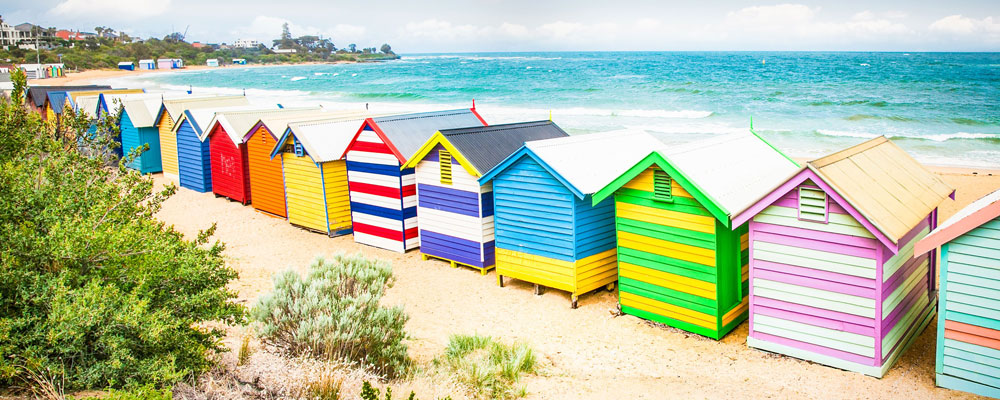
The Best Time to Visit South Australia (Adelaide)
Overall South Australia is Australia's driest state/ territory. The top two-thirds of the state is virtually all desert. Although all of the lower third of the state is also hot and dry, along the coast the weather can be cooler than in the north.
Adelaide
When is the best time to visit Adelaide? February-March is the best time of year to visit Adelaide
Why Adelaide between February and March? While February is one of the hottest months of the year in Australia on average, the latter parts of the month bridging into March tend to cool down to a seasonably warm level of comfort. Adelaide's geographical location works in its favour here.
While the first week of February still can boast days of surprisingly high temperatures in Adelaide, it still comes down to a reasonably comfortable average. Temperatures tend to settle around a 14°C (57°F) minimum and 24°C (75°F) maximum range without any of the humidity that plagues more northern cities.
Summer (December – February) During summer, average temperatures range from 16.7 - 28.6°C (62 - 83.5°F) and rainfall is sparse. Occasionally temperatures can soar to 40°C (104°F). Adelaide enjoys the lowest humidity of any Australian city.
Autumn (March-May) In autumn, the weather is pleasant with average temperatures between 12.7 - 22.7°C (55 - 73°F) and very little rainfall. The city and countryside take on a red, orange and golden hue.
Winter (June – August) In winter, average temperatures drop to between 8 - 16°C (46.5 - 60.8°F), and frosts are common in the nearby Adelaide Hills. June is the wettest month, averaging around 80 mm (3.1″), however, Adelaide is the driest of all the Australian capitals.
Spring (September – November) Spring sees weather warm up with average temperatures between 11.8 - 22°C (53.2 - 71.6°F). Rainfall is low but evenings can be quite brisk as temperatures drop quickly.

Since 2001 we’ve been helping visitors plan their dream Australian holiday. We aim to make visiting our beautiful land effortless. Let our expert holiday planners put together an itinerary for you, no obligation FREE of charge, or get some friendly advice on what small group tour would suit - Just follow the link and answer a few brief questions



